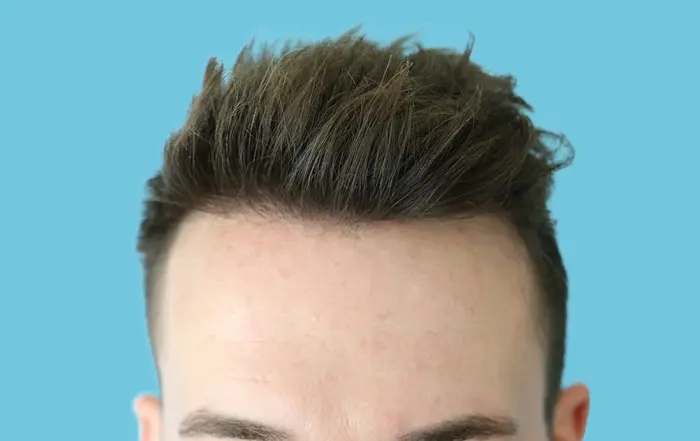Hair loss is a common issue affecting millions of people worldwide. It can impact self-esteem and overall quality of life. Advances in medical technology have led to the development of several hair transplant techniques, each offering unique benefits. This article explores the most advanced hair transplant technologies available today, providing an objective and professional overview of their mechanisms, advantages, and limitations.
Follicular Unit Transplantation (FUT)
Mechanism
Follicular Unit Transplantation (FUT), also known as the strip method, involves removing a strip of scalp from the donor area, usually at the back of the head. The strip is then divided into individual follicular units under a microscope. These units are implanted into the balding areas.
Advantages
Higher Yield: FUT can harvest a large number of grafts in a single session, making it suitable for extensive hair loss.
Cost-Effective: Generally, FUT is less expensive than other techniques.
Natural Results: When performed by skilled surgeons, FUT can provide very natural-looking results.
Limitations
Scarring: The primary drawback is the linear scar left in the donor area, which can be visible if the hair is short.
Longer Recovery: Recovery time is longer compared to other methods due to the invasive nature of the procedure.
See Also: How Much Does A Hair Transplant Cost?
Follicular Unit Extraction (FUE)
Mechanism
Follicular Unit Extraction (FUE) involves extracting individual follicular units directly from the donor area using a specialized punch tool. These units are then transplanted into the recipient area.
Advantages
Minimized Scarring: FUE leaves tiny, almost invisible scars, making it ideal for those who prefer short hairstyles.
Faster Recovery: Recovery time is shorter compared to FUT, with less postoperative discomfort.
Versatility: FUE can be used for beard, eyebrow, and body hair transplants as well.
Limitations
Time-Consuming: The procedure can be time-consuming, especially for large sessions.
Higher Cost: FUE is generally more expensive than FUT due to the labor-intensive nature of the technique.
Robotic Hair Transplantation
Mechanism
Robotic hair transplantation utilizes advanced robotic systems, such as the ARTAS system, to assist in the extraction and implantation of follicular units. The robot uses AI algorithms to identify and harvest the best grafts, ensuring precision and consistency.
Advantages
Precision: The robotic system offers unparalleled precision in graft extraction and placement.
Consistency: Automation reduces the risk of human error, ensuring consistent results.
Minimized Damage: The robot minimizes damage to the donor area, preserving the integrity of the grafts.
Limitations
High Cost: The technology is expensive, making the procedure costly.
Limited Availability: Not all clinics have access to robotic systems, limiting patient options.
Direct Hair Implantation (DHI)
Mechanism
Direct Hair Implantation (DHI) is an advanced form of FUE where the extraction and implantation are performed simultaneously using a specialized tool called the Choi Implanter Pen. This tool allows for precise control over the angle, depth, and direction of each graft.
Advantages
Enhanced Control: The Choi Implanter Pen provides superior control over graft placement, resulting in natural-looking hairlines.
Reduced Trauma: The simultaneous extraction and implantation reduce the time grafts spend outside the body, enhancing survival rates.
Faster Healing: The minimally invasive nature of DHI promotes quicker healing and less postoperative discomfort.
Limitations
Skill-Dependent: The success of DHI heavily depends on the skill and experience of the surgeon.
Higher Cost: DHI is typically more expensive due to the specialized tools and expertise required.
Platelet-Rich Plasma (PRP) Therapy
Mechanism
Platelet-Rich Plasma (PRP) therapy involves drawing a small amount of the patient’s blood, processing it to concentrate the platelets, and then injecting the PRP into the scalp. PRP contains growth factors that stimulate hair growth and enhance the healing process.
Advantages
Non-Surgical: PRP is a non-surgical procedure with minimal downtime.
Natural Results: As it uses the patient’s blood, PRP is a natural treatment with a low risk of allergic reactions.
Complementary: PRP can be used in conjunction with other hair transplant techniques to enhance results.
Limitations
Variable Results: The effectiveness of PRP can vary between individuals.
Multiple Sessions: Several sessions are often required to achieve the desired results.
Cost: PRP can be expensive, especially with the need for multiple treatments.
Stem Cell Hair Transplantation
Mechanism
Stem cell hair transplantation involves harvesting stem cells from the patient’s adipose (fat) tissue or bone marrow. These cells are processed and injected into the scalp, where they stimulate the growth of new hair follicles.
Advantages
Regenerative: Stem cells have the potential to regenerate damaged hair follicles and promote new growth.
Minimal Invasiveness: The procedure is minimally invasive with a relatively short recovery time.
Long-Term Benefits: Stem cell therapy may offer long-term improvements in hair density and health.
Limitations
Experimental: Stem cell hair transplantation is still in the experimental stages, and long-term efficacy is not yet fully established.
High Cost: The procedure is expensive and may not be covered by insurance.
Availability: Limited availability as it is not widely offered in many clinics.
Conclusion
Advancements in hair transplant technology have significantly improved the outcomes and options available for individuals experiencing hair loss. From traditional methods like FUT and FUE to cutting-edge techniques like robotic and stem cell transplants, each method offers unique benefits and challenges. Selecting the right procedure depends on individual needs, the extent of hair loss, budget, and personal preferences. Consulting with a qualified hair transplant specialist is crucial to determine the most suitable approach and achieve optimal results. As technology continues to evolve, the future of hair restoration holds even more promise for those seeking to regain their hair and confidence.

